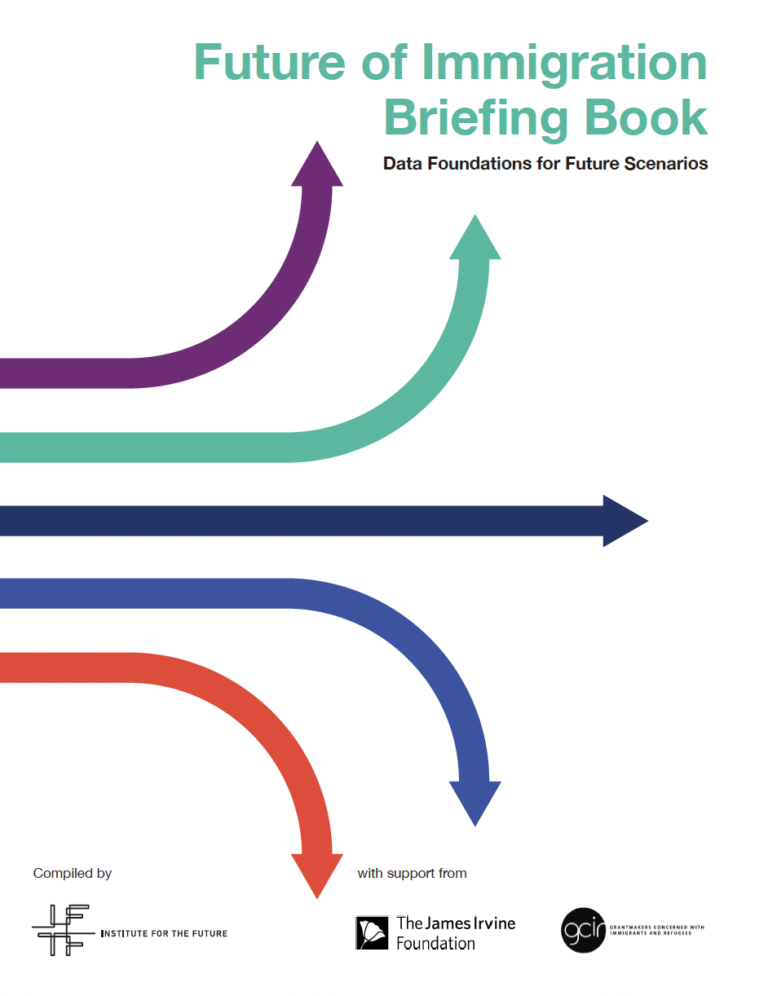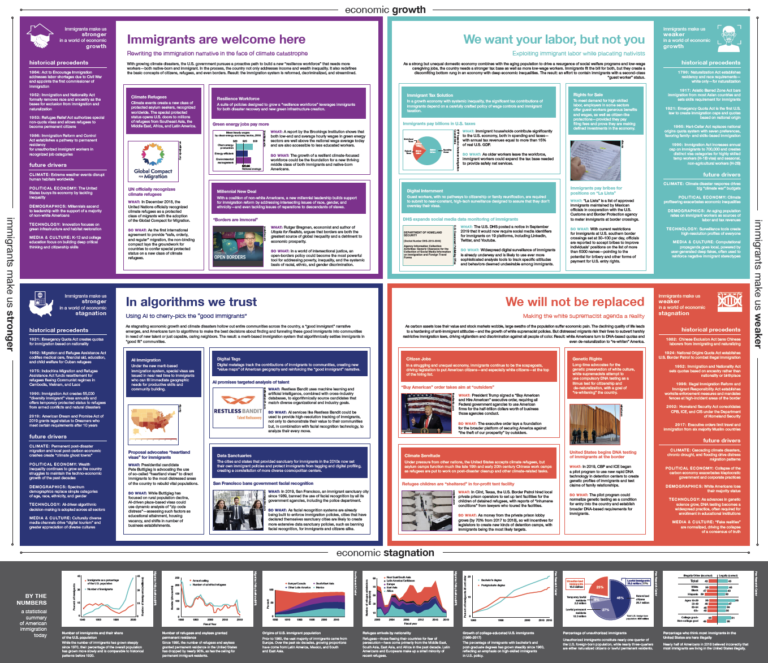Immigration reaches deep into who we are as a society. It cuts across legal frameworks, policies, and strategies. It shapes stories of cultural identity and material survival. It invents—and is reinvented by—global and local institutions. How we treat those who want to be part of our cities, our states, and our country in the future defines who we will become as Americans.
In the future of American immigration, there’s no single standout story, no fated path. Instead, the country faces a complex interplay of future drivers: political economy, technology, demographics, media, culture, and of course, climate. At the same time, a diverse history of precedents belies a single history of American immigration.
In response to this moment—and supported by The James Irvine Foundation and Grantmakers Concerned With Immigrants and Refugees (GCIR)—the Institute for the Future convened dozens of experts from diverse disciplines and perspectives to map possible futures for immigration in the US. The workshop produced four distinct paths for the coming decade and beyond. These are presented as scenarios in The Future of Immigration: Four Paths map.
The map is a guide that offers four different opening lines for a multitude of future stories for Americans. The foundation for the final map is a compilation of data produced by some of the country’s leading policy and social research organizations. IFTF assembled the data in a Briefing Book to support the conversation about the future of immigration in its expert workshop. The book does not promote any single policy or future scenario, but provides a timeline of US immigration legislation as well as on-the-ground data about the demographics and socioeconomic status of immigrants. Together, these assets are an invitation to think beyond today’s questions of walls, quotas, and green cards to stories that will bring 21st century America to life.




